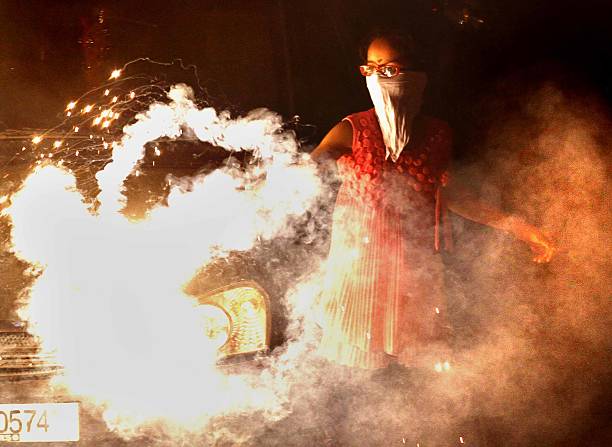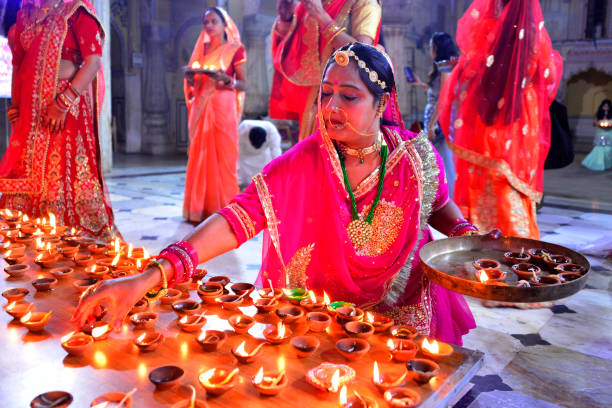Table of Contents
5 Days of Diwali 2023
Diwali, also known as Deepavali, is one of the most significant and widely celebrated festivals in India. It typically spans five days of celebration, each day holding its unique significance and rituals. In this comprehensive explanation, I will delve into the five days of Diwali, their cultural and religious importance, and the customs associated with each day.
Day 1: Dhanteras (Dhantrayodashi)

The five-day Diwali festival begins with Dhanteras, which falls on the 13th day of the dark fortnight in the Hindu month of Ashwin (usually in October or November). “Dhan” means wealth, and “Teras” refers to the thirteenth day. Dhanteras is a day dedicated to the worship of Lord Dhanvantari, the god of medicine and health, and it also marks the birthday of Goddess Lakshmi, the goddess of wealth and prosperity.
On Dhanteras, people start their preparations for Diwali by cleaning and decorating their homes. They believe that Goddess Lakshmi is more likely to visit clean and well-decorated homes. In the evening, families gather for a special puja (prayer) to seek blessings for wealth and prosperity. Traditional oil lamps, or diyas, are lit to welcome the goddess, and an image or idol of Goddess Lakshmi is worshipped with great devotion.
One significant custom of Dhanteras is buying gold, silver, or other valuable items, as it is believed that acquiring precious metals on this day is highly auspicious and brings good fortune. People also draw rangoli designs at the entrance of their homes to welcome guests and mark the beginning of the festive season.
Day 2: Naraka Chaturdashi or Choti Diwali
The second day of Diwali is known as Naraka Chaturdashi or Choti Diwali. It typically falls on the 14th day of the dark fortnight in the month of Ashwin. Naraka Chaturdashi is a day with a rich mythological significance, as it is believed to commemorate the victory of Lord Krishna over the demon Narakasura. According to the legend, Lord Krishna and his wife Satyabhama defeated Narakasura, who had terrorized the world.
To celebrate this victory of good over evil, people often wake up before dawn and take an oil bath, symbolizing the cleansing of impurities. After the bath, they wear new clothes and light lamps and candles to remove the darkness from their lives. The lighting of lamps also symbolizes the return of Lord Rama to Ayodhya after defeating Ravana, as told in the epic Ramayana.
Firecrackers and fireworks are an integral part of Choti Diwali celebrations. The loud noises and bright lights are believed to drive away evil spirits and add to the festive spirit. People also exchange sweets and gifts with friends and family on this day.
Day 3: Diwali

The third day of Diwali is the main and most widely celebrated day of the festival. It falls on the new moon day of the month of Ashwin and is dedicated to the worship of Goddess Lakshmi and Lord Ganesha. Diwali, also known as Deepavali, means “row of lights,” and it symbolizes the victory of light over darkness and good over evil.
Preparations for Diwali begin weeks in advance, with people cleaning their homes, decorating them with colorful rangoli, and shopping for new clothes and gifts. On the evening of Diwali, families come together for a grand puja. In homes and temples, idols or images of Goddess Lakshmi and Lord Ganesha are adorned with flowers and offered sweets, fruits, and incense. Devotees light numerous oil lamps and candles, creating a mesmerizing display of light.
The lighting of lamps and candles is believed to guide Goddess Lakshmi to bless the home with wealth and prosperity. People burst fireworks and firecrackers to celebrate the victory of light over darkness and to ward off evil spirits. The entire atmosphere is filled with the joyous sounds of festivities and the sweet aroma of traditional Indian sweets.
Food plays a significant role during Diwali, with families preparing a wide variety of special dishes and sweets. Exchanging gifts and visiting friends and family are common customs during this day, spreading love and happiness.
Day 4: Govardhan Puja or Annakut
The fourth day of Diwali is dedicated to Govardhan Puja or Annakut, which falls on the first day of the bright fortnight in the month of Kartik. This day has various mythological associations, the most famous being the story of Lord Krishna lifting the Govardhan Hill to protect the people of Vrindavan from the wrath of Lord Indra, the god of rain.
To celebrate Govardhan Puja, people create a representation of the Govardhan Hill using a heap of food items. This display, known as Annakut, consists of a wide variety of cooked and uncooked food, fruits, sweets, and grains, arranged in a colorful and artistic manner. The Annakut is offered to the deities and then distributed as prasad (sanctified food) to the community.
Another important custom on this day is the offering of prayers and pujas to Lord Krishna, as he is considered the protector and provider of food. Devotees visit temples to seek his blessings and participate in the Annakut ceremony.
Day 5: Bhai Dooj
The final day of the Diwali festival is known as Bhai Dooj, also called Bhai Phota in some regions. It is celebrated on the second day of the bright fortnight in the month of Kartik and is dedicated to the bond between brothers and sisters.
On Bhai Dooj, sisters perform a special puja for the well-being and longevity of their brothers. They apply a tika (a mark made with vermillion) on their brothers’ foreheads and perform aarti, a ritual of waving a lighted lamp in front of them. In return, brothers offer gifts to their sisters as a token of their love and protection. This exchange of love and gifts strengthens the bond between siblings.
The legend associated with Bhai Dooj varies across regions, but the central theme remains the celebration of the brother-sister relationship. This day is a time for family reunions, as sisters visit their brothers’ homes, or brothers may travel to their sisters’ homes to partake in the festivities.
In conclusion, Diwali is a five-day festival that encompasses a range of customs, beliefs, and celebrations, each day holding a unique significance. It is a time for spiritual reflection, the triumph of good over evil, and the celebration of family bonds and prosperity. The festival of Diwali is not only a major cultural and religious event in India but also a celebration of the universal values of light, love, and togetherness that resonate with people of all backgrounds and beliefs.

